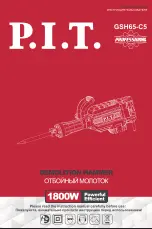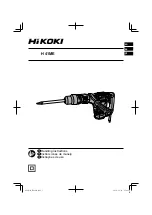
DRILLING A HOLE
Use a centre punch or sharp nail to dent the workpiece
where you want the hole. With the switch OFF, bring
the drill bit down to the workpiece, lining it up with the
hole location. Turn the switch ON and pull down on
the feed handles with only enough effort to allow the
drill to cut.
• Feeding too slowly might cause the drill bit to burn.
• Feeding too rapidly might stop the motor, causing the
belt or drill to slip, tearing the workpiece loose, or
breaking the drill bit.
• For deeper cuts, drill into the workpiece about 1/4"
(6.4 mm) and raise the drill bit out of the workpiece.
This will clear chips out of the hole. Drill again another
1/4" (6.4 mm) and raise the drill bit out of the hole to
clear debris and chips. Repeat until finished drilling
the hole. Practice with scrap material to get the feel
of the machine before attempting to do any regular
drilling operation.
When drilling metal, it will be necessary to lubricate
the tip of the drill with oil to prevent overheating the
drill bit.
DRILLING TO A SPECIFIC DEPTH
Drilling a blind hole (not all the way through the
workpiece) to a given depth can be done in two ways.
WORKPIECE METHOD (Fig. 26)
1. Mark the desired depth of the hole on the side of
the workpiece (1).
2. With the switch off, bring the drill bit (2) down until
the tip is even with the mark.
3. Hold the feed handle at this position.
4. Lock the depth scale lock knob. The chuck and
the drill bit will now be stopped at the distance
selected on the depth scale.
Fig. 26
24
VI. Operating instructions (continued)
2
1









































